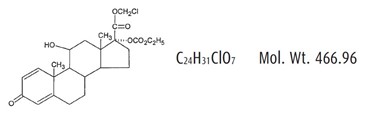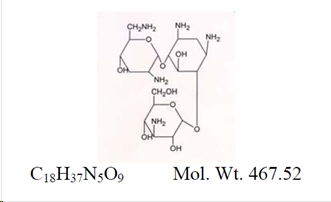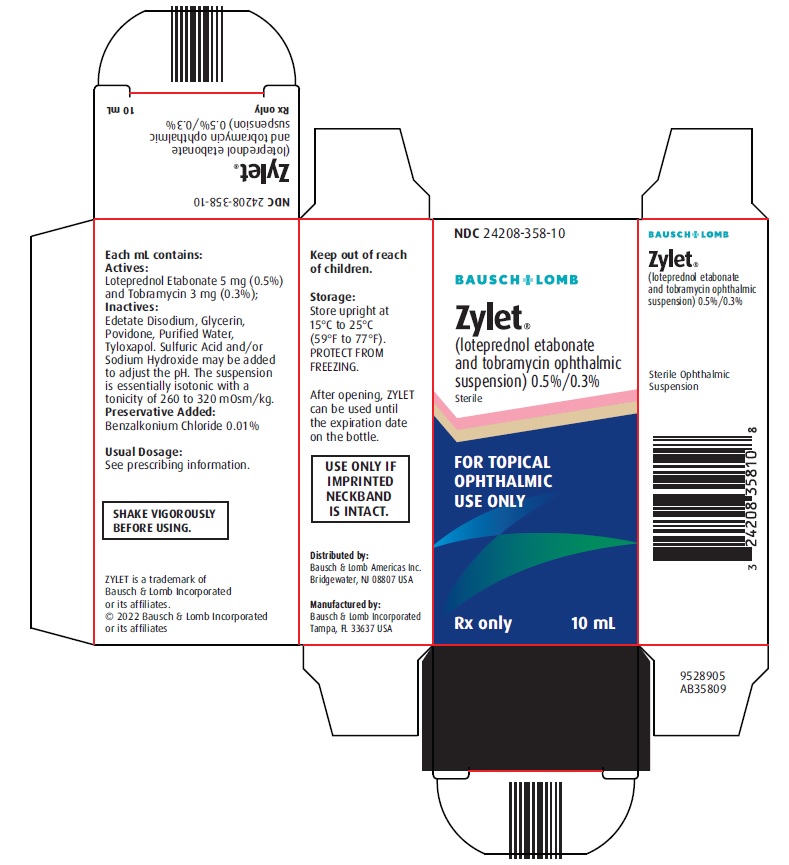Zylet
Generic name: loteprednol and tobramycin ophthalmic
Drug class: Ophthalmic steroids with anti-infectives
Medically reviewed by A Ras MD.
What is Zylet used for?
Zylet is a prescription medicine that is used to treat or prevent eye infections. It is used to treat eye swelling.
Description
ZYLET (loteprednol etabonate and tobramycin ophthalmic suspension) is a sterile, multiple dose topical anti-inflammatory corticosteroid and anti-infective combination for ophthalmic use. Both loteprednol etabonate and tobramycin are white to off-white powders. The chemical structures of loteprednol etabonate and tobramycin are shown below.
Loteprednol etabonate:

Chemical name: chloromethyl 17α-[(ethoxycarbonyl)oxy]-11β-hydroxy-3-oxoandrosta-1,4-diene-17β-carboxylate
Tobramycin:

Chemical name:
O-3-Amino-3-deoxy-α-D-glucopyranosyl-(1→4)-O-[2,6-diamino-2,3,6-trideoxy-α-D-ribo-hexopyranosyl-(1→6)]-2-deoxystreptamine
Each mL contains: Actives: Loteprednol Etabonate 5 mg (0.5%) and Tobramycin 3 mg (0.3%). Inactives: Edetate Disodium, Glycerin, Povidone, Purified Water, Tyloxapol, and Benzalkonium Chloride 0.01% (preservative). Sulfuric Acid and/or Sodium Hydroxide may be added to adjust the pH to 5.5 to 6.2. The suspension is essentially isotonic with a tonicity of 260 to 320 mOsm/kg.
Mechanism of Action
Corticosteroids inhibit the inflammatory response to a variety of inciting agents and probably delay or slow healing. They inhibit the edema, fibrin deposition, capillary dilation, leukocyte migration, capillary proliferation, fibroblast proliferation, deposition of collagen, and scar formation associated with inflammation. There is no generally accepted explanation for the mechanism of action of ocular corticosteroids. However, corticosteroids are thought to act by the induction of phospholipase A2 inhibitory proteins, collectively called lipocortins. It is postulated that these proteins control the biosynthesis of potent mediators of inflammation such as prostaglandins and leukotrienes by inhibiting the release of their common precursor arachidonic acid.
Arachidonic acid is released from membrane phospholipids by phospholipase A2. Corticosteroids are capable of producing a rise in intraocular pressure.
Loteprednol etabonate is structurally similar to other corticosteroids. However, the number 20 position ketone group is absent.
The anti-infective component in the combination (tobramycin) is included to provide action against susceptible organisms. In vitro studies have demonstrated that tobramycin is active against susceptible strains of the following microorganisms:
Staphylococci, including S. aureus and S. epidermidis (coagulase-positive and coagulase-negative), including penicillin-resistant strains.
Streptococci, including some of the Group A-beta-hemolytic species, some nonhemolytic species, and some Streptococcus pneumoniae. Pseudomonas aeruginosa, Escherichia coli, Klebsiella pneumoniae, Enterobacter aerogenes, Proteus mirabilis, Morganella morganii, most Proteus vulgaris strains, Haemophilus influenzae and H. aegyptius, Moraxella lacunata, Acinetobacter calcoaceticus and some Neisseria species.
Before taking Zylet, tell your doctor:
- If you are allergic to Zylet; any part of this medicine; or any other drugs, foods, or substances. Tell your doctor about the allergy and what signs you had.
- If you have any of these health problems: A fungal, TB (tuberculosis), or viral infection of the eye.
This is not a list of all drugs or health problems that interact with this medicine.
Tell your doctor and pharmacist about all of your drugs (prescription or OTC, natural products, vitamins) and health problems. You must check to make sure that it is safe for you to take Zylet with all of your drugs and health problems. Do not start, stop, or change the dose of any drug without checking with your doctor.
What are some things I need to know or do while I take Zylet?
- Tell all of your health care providers that you take Zylet. This includes your doctors, nurses, pharmacists, and dentists.
- Use care when driving or doing other tasks that call for clear eyesight.
- Long-term use may raise the chance of cataracts or glaucoma. Talk with the doctor.
- Have your eye pressure checked if you are on Zylet for a long time. Talk with your doctor.
- Do not use Zylet for longer than you were told by your doctor.
- Tell your doctor if you are pregnant or plan on getting pregnant. You will need to talk about the benefits and risks of using Zylet while you are pregnant.
- Tell your doctor if you are breast-feeding. You will need to talk about any risks to your baby.
How is Zylet best taken?
Use Zylet as ordered by your doctor. Read all information given to you. Follow all instructions closely.
- For the eye only.
- Shake well before use.
- Wash your hands before and after use.
- Do not wear soft contact lenses while using Zylet.
- Do not touch the container tip to the eye, lid, or other skin.
- Tilt your head back and drop drug into the eye.
- After use, keep your eyes closed. Put pressure on the inside corner of the eye. Do this for 1 to 2 minutes. This keeps the drug in your eye.
- Use as you have been told, even if your signs get better.
What do I do if I miss a dose?
- Use a missed dose as soon as you think about it.
- If it is close to the time for your next dose, skip the missed dose and go back to your normal time.
- Do not use 2 doses at the same time or extra doses.
What are the side effects of Zylet that I need to call my doctor about immediately?
WARNING/CAUTION: Even though it may be rare, some people may have very bad and sometimes deadly side effects when taking a drug. Tell your doctor or get medical help right away if you have any of the following signs or symptoms that may be related to a very bad side effect:
- Signs of an allergic reaction, like rash; hives; itching; red, swollen, blistered, or peeling skin with or without fever; wheezing; tightness in the chest or throat; trouble breathing, swallowing, or talking; unusual hoarseness; or swelling of the mouth, face, lips, tongue, or throat.
- Change in eyesight, eye pain, or very bad eye irritation.
What are some other side effects of Zylet?
All drugs may cause side effects. However, many people have no side effects or only have minor side effects. Call your doctor or get medical help if any of these side effects or any other side effects bother you or do not go away:
- Eye irritation.
- Burning.
- Stinging.
- Headache.
These are not all of the side effects that may occur. If you have questions about side effects, call your doctor. Call your doctor for medical advice about side effects.
You may report side effects to the FDA at 1-800-332-1088. You may also report side effects at https://www.fda.gov/medwatch.
If overdose is suspected:
If you think there has been an overdose, call your poison control center or get medical care right away. Be ready to tell or show what was taken, how much, and when it happened.
How do I store and/or throw out Zylet?
- Store upright at room temperature. Do not freeze.
- Keep all drugs in a safe place. Keep all drugs out of the reach of children and pets.
- Throw away unused or expired drugs. Do not flush down a toilet or pour down a drain unless you are told to do so. Check with your pharmacist if you have questions about the best way to throw out drugs. There may be drug take-back programs in your area.
Label
PACKAGE/LABEL PRINCIPAL DISPLAY PANEL
- NDC 24208-358-10BAUSCH + LOMB
- Zylet® (loteprednol etabonate
and tobramycin ophthalmic
suspension) 0.5%/0.3%
Sterile - FOR TOPICAL
OPHTHALMIC
USE ONLYRx only - 10 mL

SRC: NLM .
